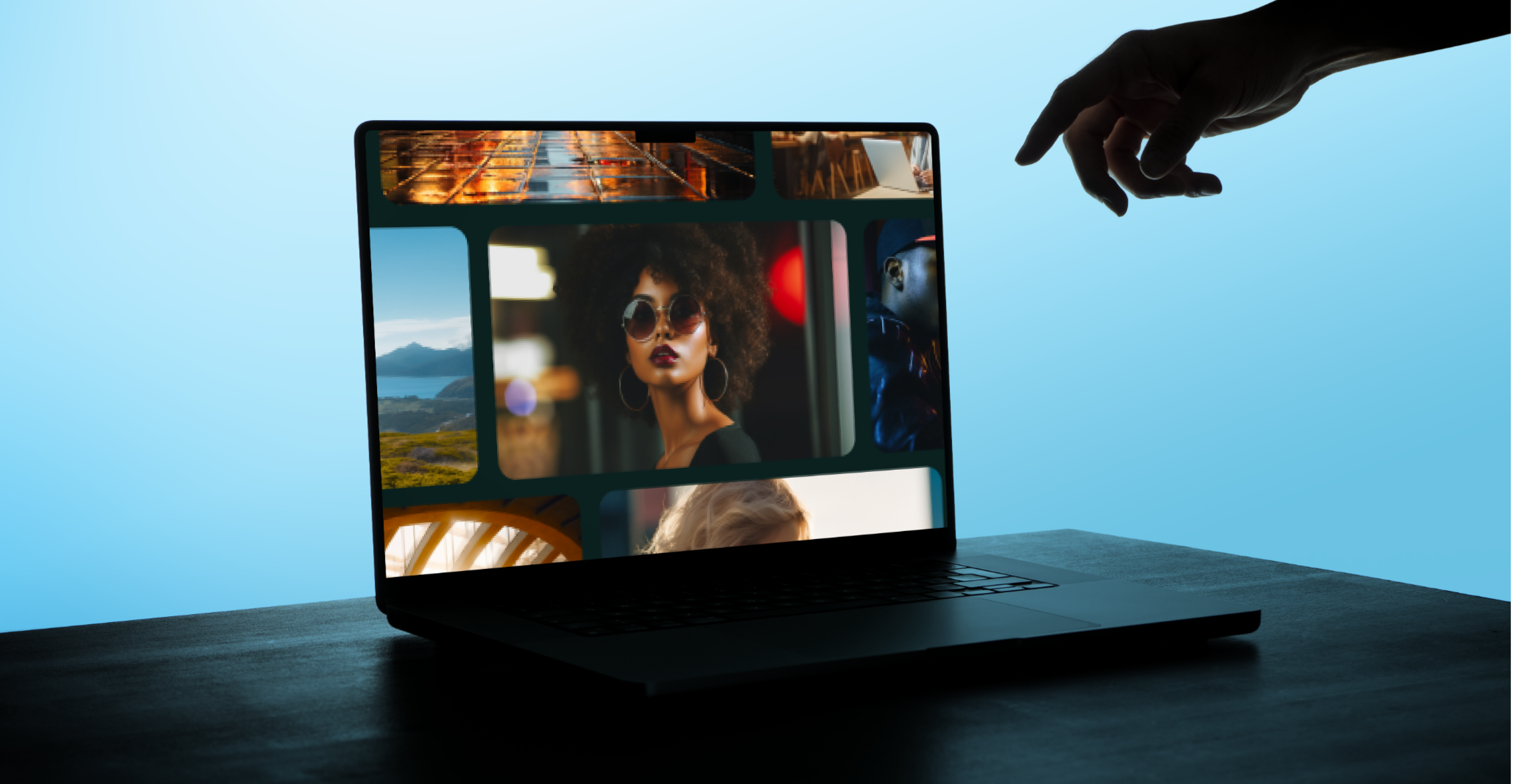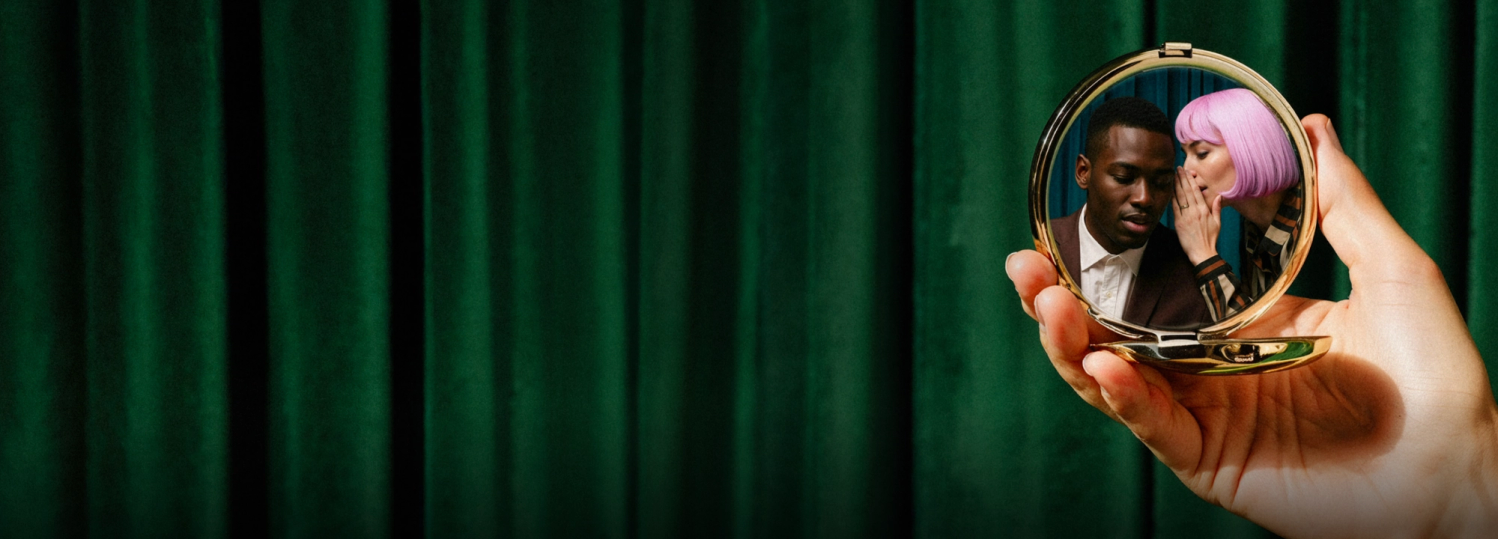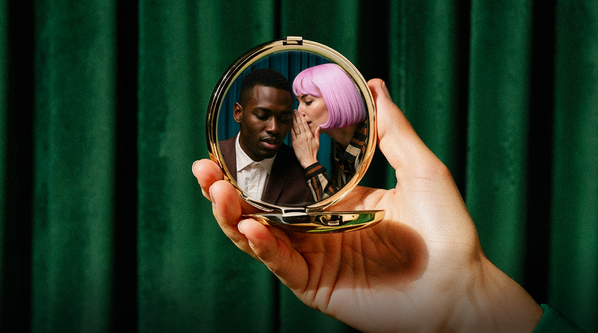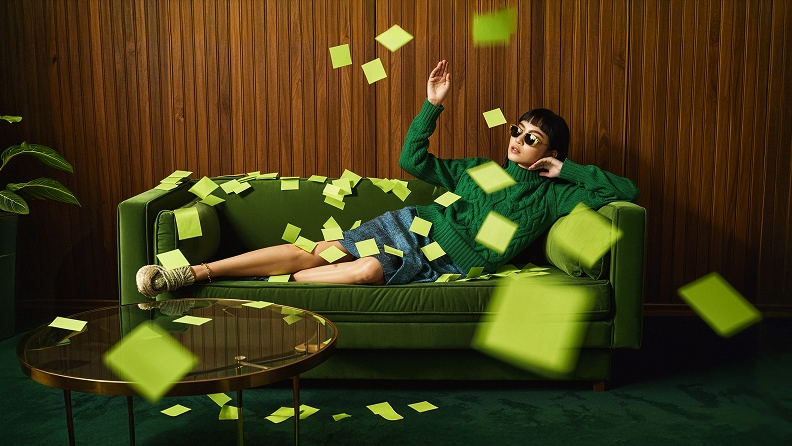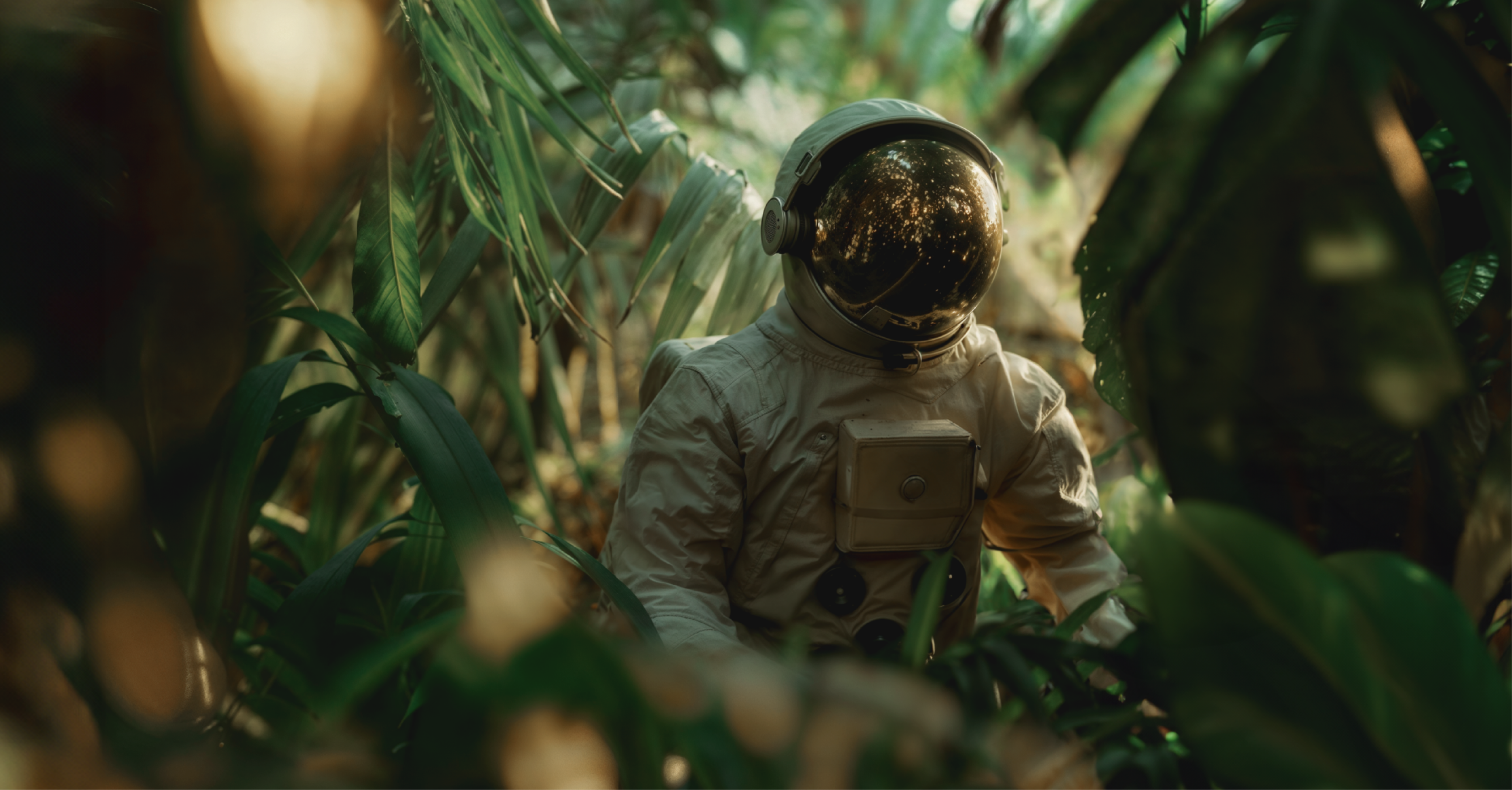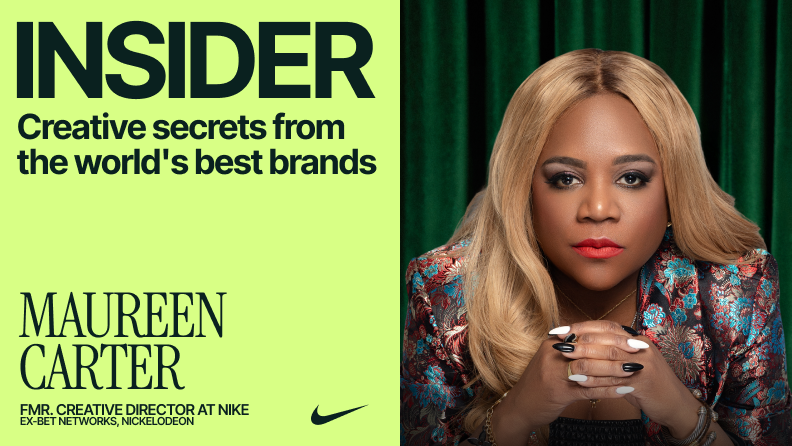
Want a creative leadership career that shapes culture? Take notes from Emmy-winner Maureen Carter: Embrace empathy, be brave, stay playful... and never play it safe.
Can you think of anything more tempting than a “do not touch” button for a kid?
Maureen Carter, former Creative Director at Nike, BET Networks and Nickelodeon, was the mastermind behind a lime green button on a kid’s app that turned into a cultural lynchpin—replacing elevator buttons in offices and shower controllers on cruise ships around the world. Though Carter would attribute the idea to Bella, one of her 10-year old design partners on the project.
She won an Emmy for her Nickelodeon app: A testament to the very real results of her innovative, empathy-fuelled approach. And at Superside’s INSIDER summit, she unpacked that approach for us.
Brimming with joy, wonder and play, Carter is a creative leader who'll leave you smiling and inspired. So, let’s walk through her vibrant journey and the many lessons she learned along the way, working with everyone from Tupac to Michelle Obama, and every brand from Deloitte to Nike.
Not just one note: Becoming a multi-dimensional creative leader
Carter started her career at five. Nurtured by her family and village, she put on her first art show at that tender age, setting the stage for a lifelong career rooted in creativity.
Starting out in the music industry, Carter created short-form content long before it was a thing. Going on instinct and creating the kind of content she wanted to consume, she had the (unknown at the time) honor of leading Tupac’s last interview and bringing it to Vibe.com. As Carter’s music career continued, she crossed paths with and created campaigns for artists, like Toni Braxton, Outkast and Usher.
In addition to the creative, Carter was at the forefront of building digital experiences for record labels. Again, before there was digital, she was doing digital. What does it take to spearhead this type of innovation?
Part of it is an insatiable appetite to learn. To grow. And to be more than just one note.
You don’t have to just be one note, right?
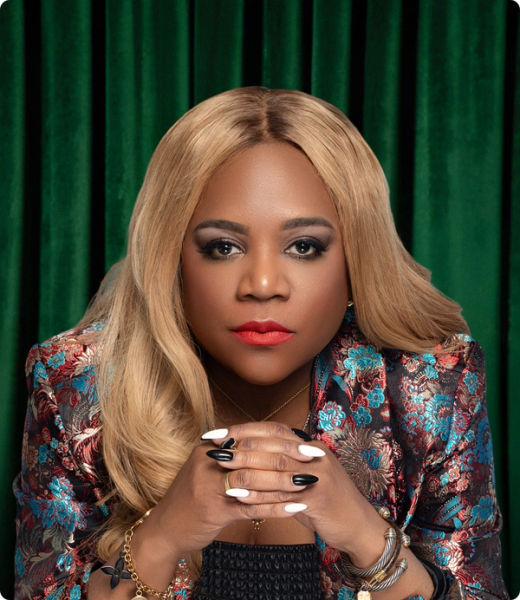
That’s why, far from resting on her laurels, Carter went on to challenge herself. She took on a role at an agency where her clients were a little less “sexy:” Banks, pharmaceutical companies, automotive companies—a true departure from Pink and TLC. Still, Carter won awards.
Deep audience empathy served as a bridge between industries, transcending experience… but bringing Carter brand new experiences that further deepened her creative leadership prowess. Of course, she wasn��’t done there. Making the jump from agency to the media industry and later fulfilling a lifelong dream at Nike, Carter learned a thing or two about ideation and creating campaigns, “that shape culture and really make the magic happen.”
Here are some of those lessons told through the lens of her work across verticals:
A recipe for award-winning ideas
What makes a great idea?
Somehow, Carter made sense of this 10 million dollar question, touching on both the intangible and tangible ingredients necessary to cook up award-winning creative campaigns.
The intangible: “Is it fun? Does it feel good?” Carter started by acknowledging the role gut instinct plays in the creative process.
The tangible: “Does it make sense for the audience we serve? Does it make sense for the time that we’re in?” Going back to nurturing deep empathy for her audience as well as cultural and temporal relevance, Carter emphasized these crucial creative lenses. To slip these metaphorical glasses on, Carter also stressed the importance of doing your research and using data.
At the end of the day, designers are artists that use data to fuel their decisions.

Going back to the example of the Emmy-winning app she helped build for Nickelodeon, Carter shared how the design for that project was informed by hands-on audience research—pipe cleaners, glitter glue and colorful crayons included. Carter and her team asked a group of kids at the University of Maryland what they wanted from an app, and gave them the crafting materials to express their answers visually.
This type of play and direct dialogue led to the insight that their audience wanted the element of surprise, which sparked the idea for the absolutely must touch “do not touch” button.
Carter's Emmy-winning Nickelodeon app
So, listen to your audience. Talk to your audience. Co-create with your audience. And chances are, you’ll end up with an irresistible idea, too.
Pivot, pivot, pivot and socialize progress to protect ideas
There’s a canyon to cross between inspiration and realization.
Carter shared the best way to make it to the other side—to the launch, the results and the rewards—is by being flexible and socializing progress. To this first point, she said, “Protecting an idea comes with not being afraid to pivot.”
She recalled one creative idea from her time at BET Networks when they envisioned shooting EJ Johnson at a laundromat for a cover story—the last place you’d expect to find this glamorous, fur-wearing, bejewelled socialite. But when shoot day came, the laundromat looked nothing like their mood boards. Turns out, they took the socialite’s arrival seriously and remodeled in preparation.
What did Carter do? She pivoted, focusing on close-up shots and an at-the-time, cutting edge parallax bubble effect for the web story.
Carter's EJ Johnson cover story on BET Networks
To give ideas their best shot at success, Carter advocated for socializing progress as well. No one wants the plug pulled on a campaign at the eleventh hour. Similarly, no one wants a campaign to launch with a whimper instead of a bang. The solution is to get out there and talk about it.
We can’t sit in the cave and say we’ll come out when we’re done. We have to be in those rooms where we’re showing our progress and what it’s going to mean and how it’s going to benefit all of the business partners cross-functionally.

Orchestrating campaigns with momentum
But turning an idea into a fully fleshed out campaign doesn’t happen through flexibility or visibility alone.
Carter compared being a design leader to the role of a conductor: “Look at all the instruments that are on your team, the flute and the trombone. Think about what instruments you can pair together. That’s the beginning of the evolution of a story.”
Her other piece of advice: “Take advantage of the momentum already going on in the building.”
Going back to her time at BET Networks, Carter recalled when the company rebranded and ran an out-of-home (OOH) campaign featuring artists from all over the country. In this campaign, she saw an opportunity to realize her dream of taking her team to Art Basel in Miami. Her idea: Painting a real mural in Overtown, a neighborhood in Miami known as the Harlem of the South.
The outcome: A branded landmark that outlived all of BET Network’s campaign billboards. And an opportunity to capture content at Art Basel from a black perspective for the first time, which led to results above and beyond Grammy and Super Bowl weekends for the network. All this goes to show what you can accomplish with some healthy opportunism.
Carter at Art Basel with her BET Networks team
Embracing the unexpected and finding inspiration everywhere
We talked about what makes a great idea. But what about where Carter’s great ideas come from?
All over the world, for starters. Carter spoke to finding inspiration in her travels: “Going to new places, meeting new people, going to new museums.” The world is made up of patterns and textures, hidden galleries and side streets, typography and signage—all incredible inspiration for a creative spirit.
I tell everyone that I mentor or coach or on my team just go outside. Look around. I call it, like the Pharrell of it all. And being in those new environments is interesting and full of unexpected surprises.

In addition to being open to the world, embrace unexpected inputs. Even the most mundane detail, like a deadline, can turn into creative inspiration. In fact, Carter named Usher’s album, 8701, based on its release date, August 7th, 2001. When the album kept getting pushed affecting promotional plans, she suggested the name, ensuring they absolutely couldn’t miss their deadline and building a story around Usher’s evolution since he started his career.
Similarly, Carter advocated for being open to unexpected talent. From an Uber driver in Charleston, South Carolina to a reality show contestant with a background in finance, some of the most successful creatives she’s hired came from less than traditional backgrounds.
So, take a chance. Pitch the weird idea. Hire the unconventional creative. It might just pay off—and you might just define a cultural moment or change a person’s life in the process.
Play, wonder and keeping the creative spirit alive
A self-described kid at heart, Carter dances and does yoga on rooftops in Brooklyn. It’s all part of how she feeds her inner Pharrell, finding moments of pause in order to keep play and wonder alive.
I don’t turn on and off my play and wonder. That wonderment is all the time. You have to figure out though how to take a pause from it because it could just be ideas, ideas, ideas, ideas, right? So, it’s knowing how to give yourself a break.

As a lifelong educator, she encourages play and wonder on her creative teams in many different ways too. By bringing in guest speakers—graffiti artists, photographers and creatives from around the world—she encourages her team to continue learning and find inspiration across crafts.
Carter also loves a good creative exercise… and we’re not talking about deadlifting laptops. She shared the example of a project she led at Comcast to ease the merging of three different design teams—one that led to her first publication and international speaking engagement. Carter had each person on her newly blended team pick a partner, get to know them and design a poster based on what they learned. Then, she put on a gallery exhibit with these posters, complete with wine, cheese and a violinist, all within a corporate setting.
It was unconventional, playful and transformative for the dynamics on that design team. The moral of the story: Play has a place in even the most professional settings. Perhaps that’s where it’s most important of all.
Empathy and leaning into cultural differences
The red thread tying all of Carter’s stories and successes together: Empathy.
Her deep capacity for empathy allowed her to not only best serve her audience, but flex and stretch and learn in dramatically different settings. She recalled her time at Deloitte, putting that empathy to the test. Her first role there involved setting up and leading the Washington, D.C. office, which meant she went from riding the elevator with the likes of Pink and Nick Cannon to marines and people who flew planes on 9/11.
But Carter thrived by leaning into those cultural differences. And in turn, being exposed to so many different experiences—from the music beat to the media world, the classroom to Obama’s technology board, the agency scene to Nike’s iconic universe—fuelled her spirit and evolution as a creative leader.
I brought my flair and I became a person of a different culture. So not only was I being exposed to people of different cultures, I embraced the fact that I was also different for my clients and for my audience. And for that we were able to do a lot.

Live the creative leadership dream
Carter’s creative leadership career is the stuff of dreams.
But she would be the first to say, you can do the same. You can listen to your audience, hype your campaigns, seize opportunities, take chances, blend work with play and lean into every experience and cultural difference along the way.
Just remember to empathize, be brave and definitely touch the “do not touch” button.



